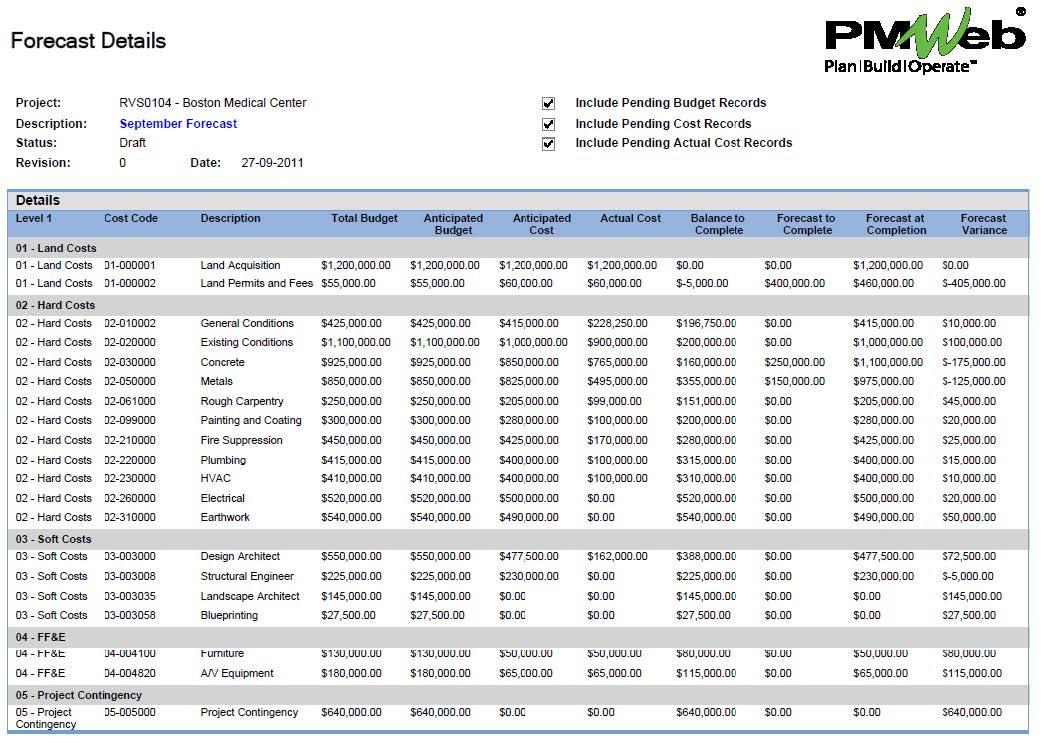Gross Development Value (GDV) is one of the most important performance metrics that all real estate investors and property developers closely monitor and evaluate when building their project assets. The gross development value of a property investment project gives a near accurate figure of what that property or real estate development project may be worth when all development works have been completed. In other words, it will also show if a profit has been, or will be made from the development project, and at what level.
The most common and most basic formula to estimate the Gross Development Value is based on the formula that GDV = Land + (Construction + Contingency + Fees + Profit) where Land is the Purchase price of land/ property/ site acquisition, Construction is the Engineering, construction and management costs, Contingency is the Project Contingency and Management Reserve, Fees are the Fees and transaction costs and Profit is the required Developers profit.Using a Project Management Information System (PMIS) platform like PMWeb will provide the real estate investors and property developers with real-time monitoring and evaluation of the property Gross Development Value (GDV) that is based on trustworthy data captured using the different project management business processes mapped into PMWeb. This will enable applying the best practice of earned value method (EVM) to monitor, evaluate and report on the performance of the Gross Development Value (GDV).

The budget at completion (BAC) cost will be set to equal the property Gross Development Value (GDV). This will include the budget cost for the land purchase price, engineering, construction, and management cost, contingency and management reserve, fees and transaction cost, and the required target developer’s profit. PMWeb Budget module will be used to capture those details at the level of detail set in the cost breakdown structure (CBS). The assigned budget value for each CBS level can be in the currency associated with the estimated cost.
Each budget line item will be linked to the project schedule activity to detail the planned start and finish dates of spending the funds associated with that specific budget item. PMWeb allows selecting the spending curve pattern associated with each budget line item or there is the option to manually create the budget projection. The budget projection will the basis for the Planned Value (PV) for spending the property Gross development value (GDV) which will be needed for the Earned Value Method (EVM) reporting.
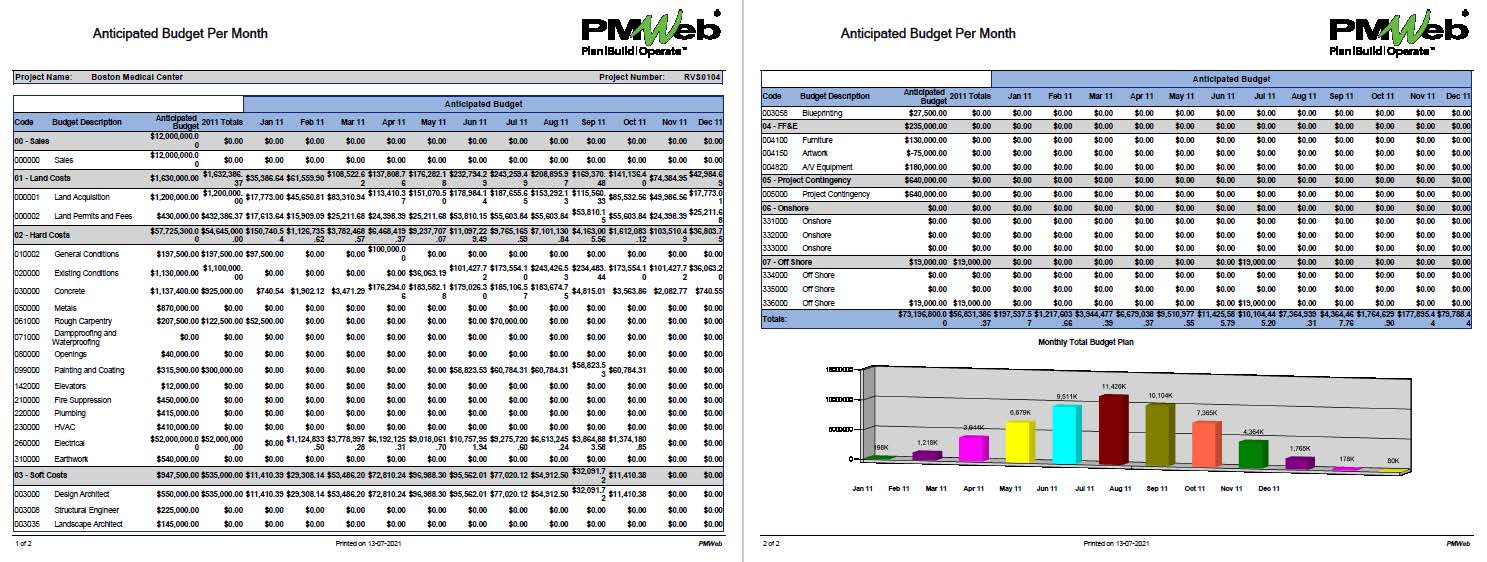
When the gross development budget value is frozen to become the approved GDV budget baseline, all revisions to the approved project budget should be carried out using the PMWeb budget adjust module. This will provide a formal process for submitting, reviewing, approving, and tracking all changes to the approved budget. Those could be changes that could result in increasing or decreasing the budget as well as transferring funds from one cost center to another including all contingency and management reserve drawdowns. The workflow assigned to the budget adjust module will incorporate the approval levels set by the real estate developer.

To evaluate and monitor the on-time completion of the real estate asset, three performance measures will be needed. Those will be the Total Float (TF), Schedule Variance (SV), and Schedule Performance Index (SPI). To calculate those measures, first, a project schedule needs to be created to calculate the early and late start dates of each activity in the real estate development project which will also be the basis for determining the total float (TF) value for each activity. When the schedule is updated, the real estate developer can compare if there are delays in the project completion date.
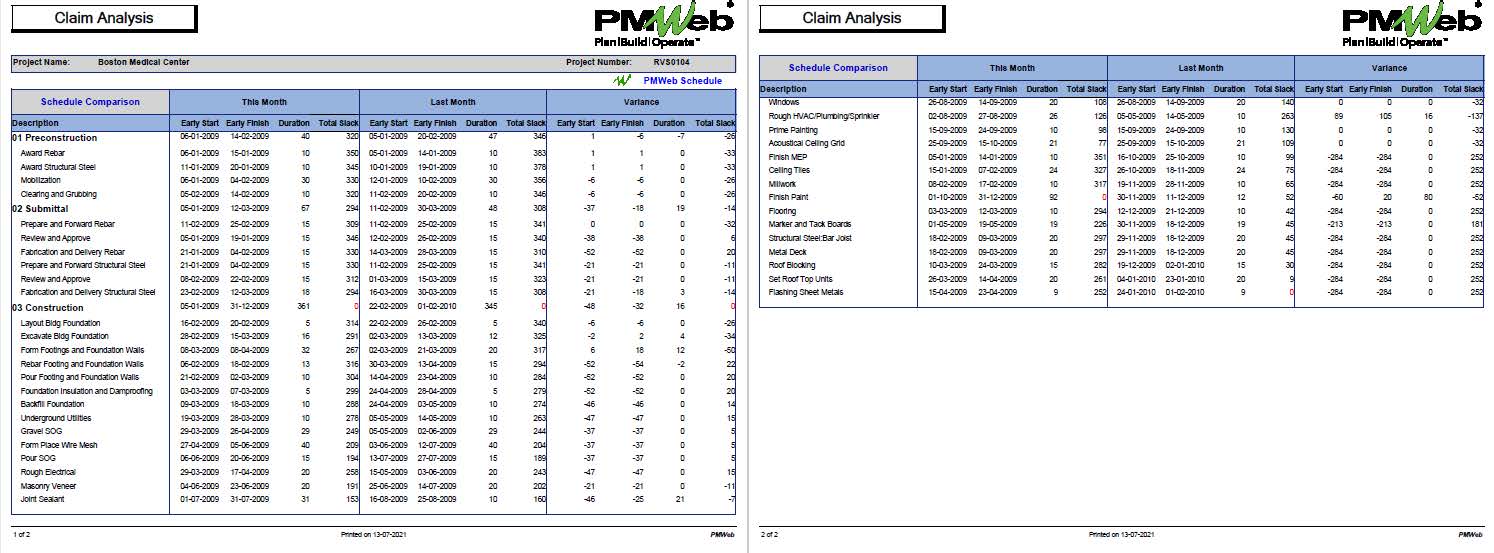
The Earned Value (EV) measure will use the progress schedule data to capture the Percent Complete for each activity assigned to each budget line item. The Earned Value (EV) will be calculated by multiplying the approved percent complete for the project schedule activity assigned to the GDV budget line item by the budget value for that same line item. For example, if the budget price of the land acquisition was USD 20 Million and 50% of the land acquisition effort was completed during that particular month, then the Earned Value for the land acquisition will be USD 10 Million.The schedule variance (SV) which is the difference between the Earned Value (EV) and Planned Value (PV) is used to ensure that the allocated budget spending is spent as planned. This is important as otherwise; the real estate developer will have funds that although were blocked for the project they are not used. This indicates a lack of efficiency when it comes to budget spending. The Schedule Performance Index (SPI) is the measure that shows the efficiency in spending the project budget by dividing the Earned Value (EV) by the Planned Value (PV).
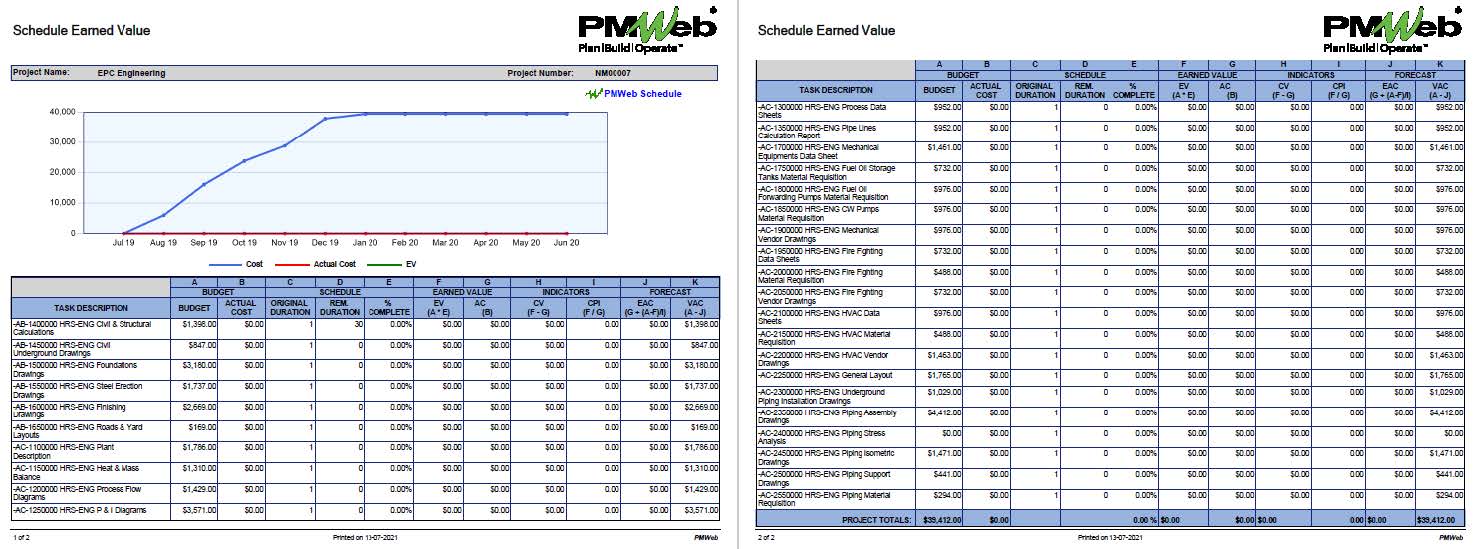
It is important for the real estate developer is to ensure that the actual project cost does not exceed what has been planned and approved otherwise the real estate developer will end having a real estate asset that has a cost that exceeds the value set by the market for similar developments. Therefore, great care should be given to calculating the actual cost incurred on the project.The Actual Cost (AC) incurred on a project will be either commitment actual cost or non-commitment actual cost. The commitment actual cost will be the interim payment certificates or invoices issued against contracts, subcontracts, purchase orders, and other types of commitments. Those would include for example the contract agreements with the project management consultant, concept design consultant, detailed design consultant, lawyers and legal support, real estate consultant, marketing and public relations firm, contractors, and others. PMWeb commitment module will capture all of those contracts as well as changes whether they are potential, under review, approved, or disputed
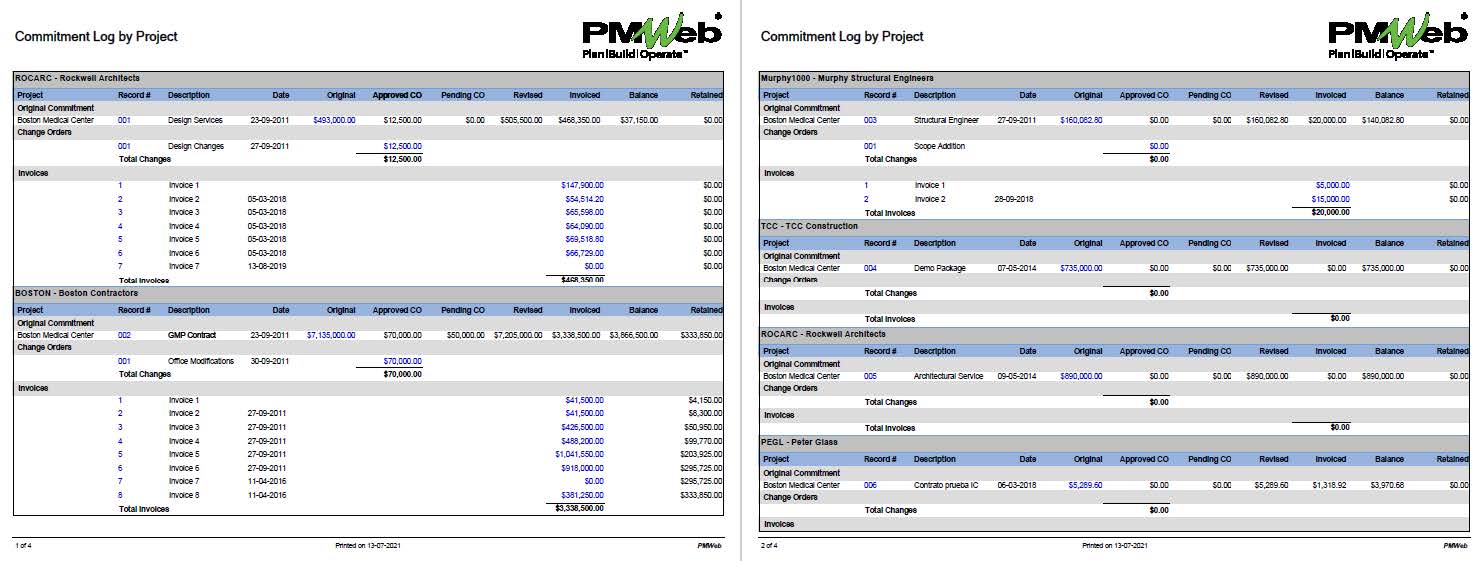
The non-commitment actual cost will be the actual expenses that are not invoiced against a specific commitment contract, PMWeb miscellaneous invoices module will be used to capture those expenses. In addition, for the real estate developer’s own resources, timesheets will be used to capture the hours spent on the project. PMWeb allows defining different rates for each resource to capture their actual cost incurred on the project. In addition, Non-Commitment costs could also include expenses imported from the entity’s financial system or ERP.
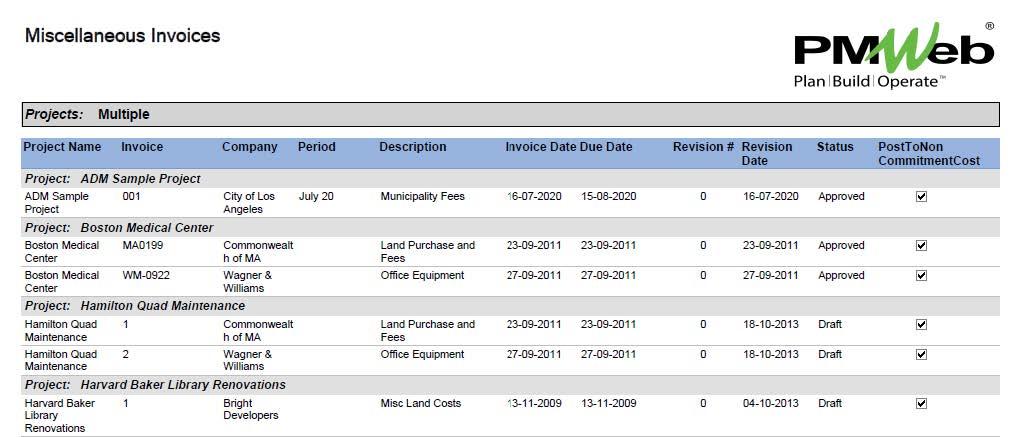
By comparing the earned value (EV) for the completed project scope of work with the actual cost (AC) spent or incurred for the same scope of work, the real estate developer can immediately determine if there is any cost variance (CV) which is the difference between Earned Value (EV) and Actual Cost (AC). The cost performance index (CPI) details the cost-efficiency in spending the approved project budget which is calculated by dividing Earned Value (EV) by Actual Cost (AC). In addition, it is important to report on the project contingency and management reserve drawdown as those are funds allocated by the real estate developer to respond to the project’s accepted risks.
